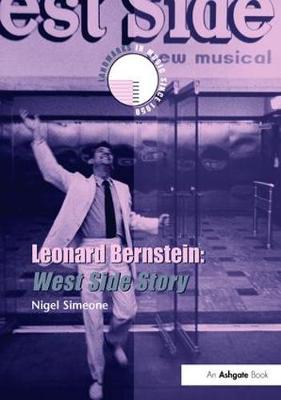Landmarks in Music Since 1950
2 total works
One of the Broadway musicals that can genuinely claim to have transformed the genre, West Side Story has been featured in many books on Broadway, but it has yet to be the focus of a scholarly monograph. Nigel Simeone begins by exploring the long process of creating West Side Story, including a discussion of Bernstein's sketches, early drafts of the score and script, as well as cut songs. The core of the book is a commentary on the music itself. West Side Story is one of the very few Broadway musicals for which there is a complete published orchestral score, as well as two different editions of the piano-vocal score. The survival of the original copied orchestral score, and the reminiscences of Sid Ramin and Irwin Kostal, reveal details of the orchestration process, and the extent to which Bernstein was involved in this. Simeone's commentary considers: musical characteristics and compositional techniques used to mirror the drama (for example, the various uses of the tritone), motivic development, the use and reinvention of Broadway and other conventions, the creation of dramatic continuity in the score through the use of motifs and other devices, the unusual degree of dissonance and rhythmic complexity (at least for the time), and the integration of Latin-American dance forms (Mambo, Huapango and so on). Simeone also considers the reception of West Side Story in the contemporary press. The stir the show caused included the response that it was the angular, edgy score that made it a remarkable achievement. Not all reviews were uncritical. Finally, the book looks in detail at the making of the original Broadway cast recording, made in just one day, included on the accompanying downloadable resources.
What makes Oiseaux exotiques so important is that it is arguably the first of Messiaen's major works to create a successful synthesis between his music and his passion for ornithology. The earliest composition to use birdsong to a significant extent was the Quatuor pour la fin du Temps (1940-41). A newspaper interview a few years later (France-Soir, 1948) demonstrates Messiaen's growing desire to move away from the stylization that had characterized the Quatuor towards a much greater realism, based on a close observation of birds in their natural habitat. At the same time, Messiaen continued to regard birdsong as music - and divinely inspired music at that - a belief that led for a time to an obsession with truth-to-nature. Against this background, Oiseaux exotiques proves to be a landmark, the work in which Messiaen the musician began to regain the upper hand over Messiaen the ornithologist. The introductory chapter (Chapter 1) outlines the background to Oiseaux exotiques, discussing Messiaen's relations with the 1950s avant garde - in particular with his former pupil Pierre Boulez - and his involvement with the concerts of the Domaine musical, for which Oiseaux exotiques was composed. In Chapter 2, access to Messiaen's sketches enables the authors to analyse his compositional methods in unprecedented detail; a generous number of music examples refer to birdsong recordings actually used by Messiaen (which can be heard on the accompanying CD), and trace step-by-step the evolution of musical ideas from first notation to finished score. Chapter 3 provides a commentary on the music, investigating issues of continuity and texture, and revealing the processes underlying the score's dazzling profusion. In two further chapters Peter Hill and Nigel Simeone recount the reception history of Oiseaux exotiques, and compare recorded interpretations, taking as their point of departure the historic premiere, included in full on the CD. Finally, the Conclusion considers

